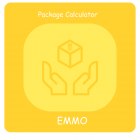Step-by-Step Guide to Creating a RequireJS Plugin in Magento 2

Step-by-Step Guide to Creating a RequireJS Plugin in Magento 2
Creating a RequireJS plugin in Magento 2 involves defining dependencies and working with templates. Here’s how to do it, along with an example.
Table Of Content
What is a RequireJS Plugin in Magento 2?
A RequireJS plugin in Magento allows you to load non-standard modules, such as text files, HTML, or JSON, using the text! suffix. This approach ensures that the file's content is treated as a string and can be parsed dynamically.
Example: Creating a Text Plugin in Magento 2
To define a RequireJS plugin, use the define() method in your JavaScript file. For this example, the dependency loads an HTML template file:
JavaScript File (requirejs-text.js)
define([
'jquery',
'mage/template',
'text!Your_Module/template/plugin.html',
'mage/translate'
], function ($, mageTemplate, htmlFile, $t) {
var htmlContent = mageTemplate(htmlFile, {
data: {
title: $t("<h1>Custom Title</h1>"),
linkText: $t("<h1>Sample Anchor Text</h1>")
}
});
$('#main').html(htmlContent); // Adds content to an element with ID "main"
});
Step 1: Create the HTML Template
Add the following HTML file to your module’s web/template folder. This file uses underscore.js syntax, which is required to parse dynamic data.
<div class="field">
<p class="text-main"><%= data.title %></p>
<p class="text-secondary"><%- data.linkText %></p>
</div>
Key Notes on Implementation
- Dependencies: The mage/template dependency ensures the template is parsed correctly, while text! loads the HTML content.
- Dynamic Data: The $t function from mage/translate is used for localization and dynamically updates template data.
- HTML Insertion: The
$('#main').html(htmlContent);line replaces the content of the element with ID main.
This guide provides a clear process for implementing RequireJS plugins, minimizing errors and improving template integration.
Tip
To enhance your eCommerce store’s performance with Magento, focus on optimizing site speed by utilizing Emmo themes and extensions. These tools are designed for efficiency, ensuring your website loads quickly and provides a smooth user experience. Start leveraging Emmo's powerful solutions today to boost customer satisfaction and drive sales!
FAQs
What Is a RequireJS Plugin in Magento 2?
A RequireJS plugin in Magento 2 lets you load non-standard modules like HTML, JSON, or text files. It uses the text! prefix to load file content as a string for dynamic usage.
Where Do You Place the Template File for a RequireJS Plugin?
The template file should be placed in the web/template directory of your Magento module. For example:
Your_Module/web/template/plugin.html
How Does the Template File Work with the Plugin?
The template file contains HTML content that dynamically renders data passed from the JavaScript file. Example:
<%= data.title %>
<%- data.linkText %>
The syntax uses Underscore.js delimiters for dynamic rendering.
What Are Common Issues When Using RequireJS Plugins?
Common issues include:
- Incorrect paths for dependencies or template files.
- Syntax errors in the template file.
- Missing required modules like
'mage/template'or'mage/translate'. - Performance concerns when loading large templates or datasets.
How Can You Debug RequireJS Plugins in Magento 2?
To debug plugins effectively:
- Use
console.logto inspect dependencies and data. - Ensure correct syntax in the JavaScript and template files.
- Test individual components of the plugin in isolation.
- Check for proper loading of modules using browser developer tools.
Can RequireJS Plugins Be Customized?
Yes, you can customize the plugin by:
- Modifying the template file to include additional HTML or data bindings.
- Adding new dependencies for extended functionality.
- Using JavaScript logic to process dynamic data more effectively.









